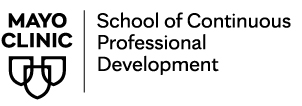Coaching and Preparation for the ABNS Neuroanatomy Examination for PGY-2 ( for Mayo and non- Mayo US neurosurgery residents)
Online format learning directed by Luciano CPC Leonel, MD PhD and Maria Peris Celda, MD.
Duration: September PGY-1 to June PGY-1. Start of program September 2022.
Contents:
- Organization/coaching and schedule of self- study
- Online 15-question quiz sent per week/2 weeks
- Availability of individual or group online meeting once every 2 months if required
For questions please email prouty.hunter@mayo.edu .
Practical Sessions (Mayo Rochester Residents only). For other programs please see short training programs.
PGY1
- Empty egg drilling
- Isolated calvarium
- Burr holes for external ventricular drains, intracranial pressure monitors, bolts, and subdural hematoma evacuations
- Simple parietal, occipital craniotomies
PGY2
- Midline suboccipital craniotomy, C1 laminectomy for Chiari decompression, fourth ventricle exploration
- Interfascial dissection, myocutaneous flap, pterional craniotomy, lesser sphenoid resection, curvilinear durotomy, temporal lobectomy
- Transcortical frontal approach to the lateral ventricle
PGY3
- Interfascial fat pad dissection, frontotemporal craniotomy, orbital optic osteotomy, anterior clinoidectomy, Dolenc dural opening
- Enlarged temporal craniotomy, subtemporal approach to basilar apex
- Interhemispheric trans-callosal trans-choroidal approach to the third ventricle, third ventriculostomy
- Retrosigmoid approach to cerebellopontine angle
- Middle fossa dissection
- Transmastoid approaches optional
- Endonasal basic sinus opening
- Bifrontal transbasal approach
PGY4
- Interfascial fat pad dissection, frontotemporal craniotomy with orbital-zygomatic craniotomy
- Middle fossa craniotomy, anterior petrosectomy
- Posterior petrosectomy
- Far lateral approach to foramen magnum
- Endoscopic endonasal approach - nasoseptal flap, sphenoid exposure, sellar exposure and exploration, pituitary transposition
- Endoscopic endonasal approach - Transmaxillary, trans-pterygoid with cranial nerve V2 and vidian nerve exposure, transclival with cranial nerve V1 exposure
- Endoscopic endonasal approach - Draf-3 sinusotomy, skull base resection
Observership programs in neurosurgery and otolaryngology
Please inquire about our options for national and international observerships of up to 2 weeks of duration. If interested please let us know the preferred time for rotation, subspecialty, and send an updated curriculum vitae for consideration leonel.luciano@mayo.edu .
Mayo Clinic does does not accept rotations requested less than 6 months in advance.
Laboratory resources
Equipment available to our fellows and residents includes:
- Operating microscope stations
- Endoscopic stations
- Anatomical specimens+
- Research fellows office computers available for fellows
- Microsurgical instrumentation
- Endoscopic instrumentation
- Professional photography equipment
- 3D projection equipment
Selected publications
Books
- Rhoton’s Atlas of Head, Neck and Brain
- Techniques and Key Points in Endoscopic Cranial Base Reconstruction
Peer-reviewed publications
List and Link to Pubmed

 Facebook
Facebook X
X LinkedIn
LinkedIn Forward
Forward